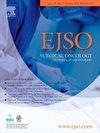嗜铬细胞瘤的治疗及随访进展
IF 3.5
2区 医学
Q2 ONCOLOGY
引用次数: 0
摘要
嗜铬细胞瘤(PHEO)是一种罕见的神经内分泌肿瘤,起源于肾上腺髓质的嗜铬细胞。这些肿瘤能够产生和释放大量的儿茶酚胺(CA)激素。PHEO患者通常会出现短暂的血压波动、头痛和心悸等症状。在极端情况下,他们可能会出现严重的并发症,包括心脑血管事件、心肌疾病和胃肠道问题。在晚期,PHEO可影响多个器官,可能导致嗜铬细胞瘤危象。然而,嗜铬细胞瘤的临床表现可能多种多样。部分患者无典型的头痛、心悸、出汗三联征,无明显临床症状或体征。仅有影像学及生化指标异常,对早期诊断构成挑战。PHEO的主要治疗选择包括手术和非手术方法。与许多其他肾上腺病理相比,目前对于PHEO的最佳手术与非手术治疗尚无共识。与传统的开放式手术相比,腹腔镜手术有很多好处。然而,是否腹膜后或经腹膜腹腔镜肾上腺切除术仍有争议。达芬奇机器人辅助肾上腺切除术具有手术精度高、止血能力强等优点。肾上腺切除术的日间手术管理模式已被证明是安全可行的。然而,目前对其长期有效性和大规模应用的研究仍存在局限性。此外,Senhance机器人在泌尿外科,特别是肾上腺切除术中的应用,迄今为止还很少有研究。在嗜铬细胞瘤的非手术治疗方面,化疗、放射性核素治疗、靶向治疗和免疫治疗以及射频消融和微波消融化疗均有显著进展。本文旨在综述嗜铬细胞瘤治疗的最新进展。本文章由计算机程序翻译,如有差异,请以英文原文为准。
Progress in treatment and follow-up of pheochromocytoma
Pheochromocytoma (PHEO) is an uncommon neuroendocrine tumor originating from the chromaffin cells of the adrenal medulla. These tumors are capable of producing and releasing substantial amounts of catecholamine (CA) hormones. Individuals with PHEO often experience transient blood pressure fluctuations, headaches, and palpitations, among other symptoms. In extreme cases, they may develop severe complications, including cardiovascular and cerebrovascular incidents, myocardial disorders, and gastrointestinal issues. At the advanced stage, PHEO can affect multiple organs, potentially leading to pheochromocytoma crisis. However, the clinical manifestations of pheochromocytoma may be diverse. Some patients have no typical triad of headache, palpitations, and sweating, and are not accompanied by obvious clinical symptoms or signs. There are only abnormalities in imaging and biochemical indicators, which will pose a challenge for early diagnosis. The primary treatment options for PHEO encompass surgical and non-surgical approaches. In contrast to many other adrenal pathologies, there is currently no consensus on the optimal surgical versus non-surgical management of PHEO. Laparoscopic surgery, as opposed to traditional open surgery, offers numerous benefits. However, whether retroperitoneal or transperitoneal laparoscopic adrenalectomy remains controversial. Da Vinci robot-assisted adrenalectomy has the advantages of highly precise operation and excellent hemostasis capabilities. The day surgery management model for adrenalectomy procedures has proven to be both safe and feasible. However, current research on its long - term effectiveness and wide - scale application still has limitations. Additionally, the application of the Senhance robot in urology, particularly in adrenalectomy, has seen relatively little investigation thus far. In terms of non-surgical treatment for pheochromocytoma, chemotherapy, radionuclide therapy, targeted therapy and immunotherapy, as well as radiofrequency ablation and microwave ablation chemotherapy have all advanced significantly. This article aims to review the latest advancements in the treatment of pheochromocytoma.
求助全文
通过发布文献求助,成功后即可免费获取论文全文。
去求助
来源期刊

Ejso
医学-外科
CiteScore
6.40
自引率
2.60%
发文量
1148
审稿时长
41 days
期刊介绍:
JSO - European Journal of Surgical Oncology ("the Journal of Cancer Surgery") is the Official Journal of the European Society of Surgical Oncology and BASO ~ the Association for Cancer Surgery.
The EJSO aims to advance surgical oncology research and practice through the publication of original research articles, review articles, editorials, debates and correspondence.
 求助内容:
求助内容: 应助结果提醒方式:
应助结果提醒方式:


